It was good that the two of us got refreshed nicely around midday, since then we had a longer walk linked to our attempt to find a cultural property inscribed in the UNESCO’s World Heritage List. While we were doing that we were still often passing by the “houses that made somebody very happy once” (see the previous text). Since it was Saturday, it was completely evident that almost nothing worked here.
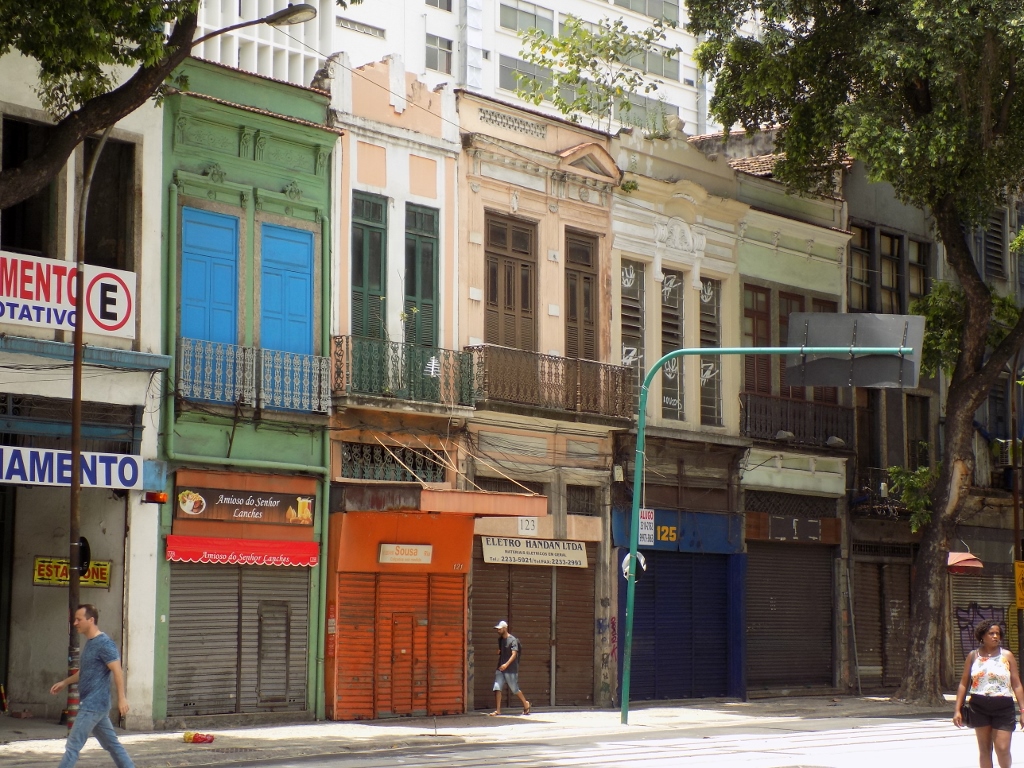 Colourful houses in the centre of Rio
Colourful houses in the centre of Rio
What the two of us were looking for here was Valongo Wharf Archaeological Site. Just as we thought that we got something wrong and that in fact we had no idea where the site was, we saw it. This place, too, may seem like a complete disappointment at first sight.
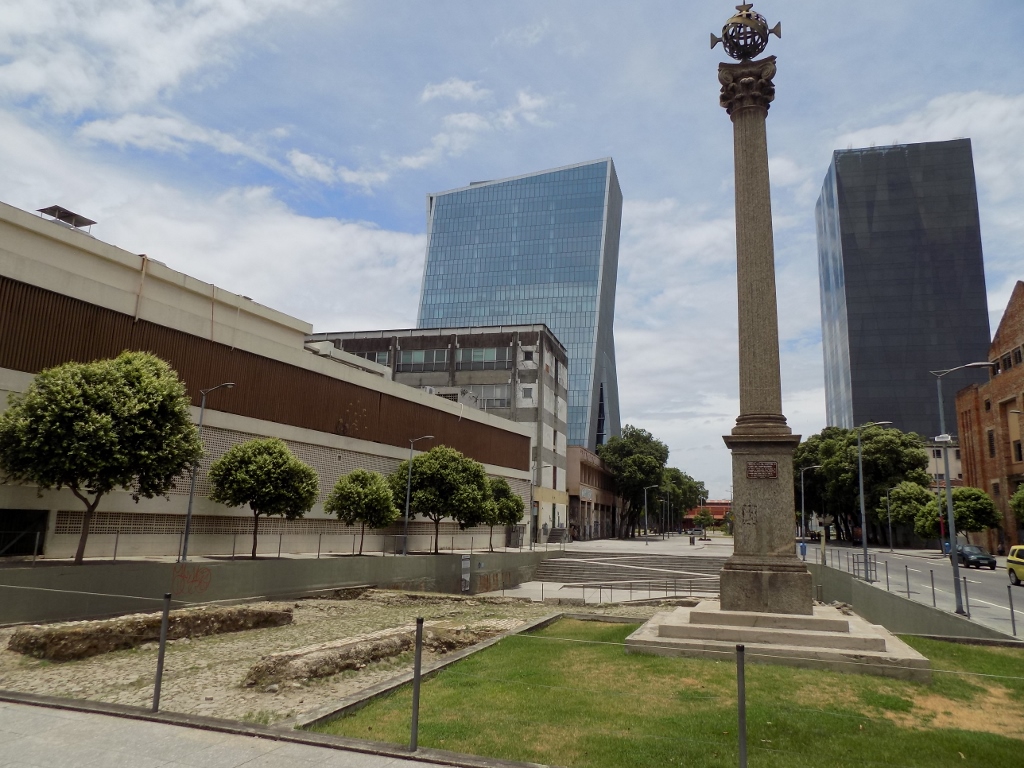 Valongo Wharf Archaeological Site
Valongo Wharf Archaeological Site
In the part cleared up by archaeologists, it is possible to see stones and it is obvious that there used to be a flat area paved by these large pieces of rock. And that is all that can be seen today. The significance of this place, on the other hand, is huge. It is based on the fact that here there used to be a wharf built in 1811 where ships that brought enslaved Africans to the South American continent used to dock. The place is considered the most important material evidence outside Africa concerning the Atlantic trade with enslaved Africans.
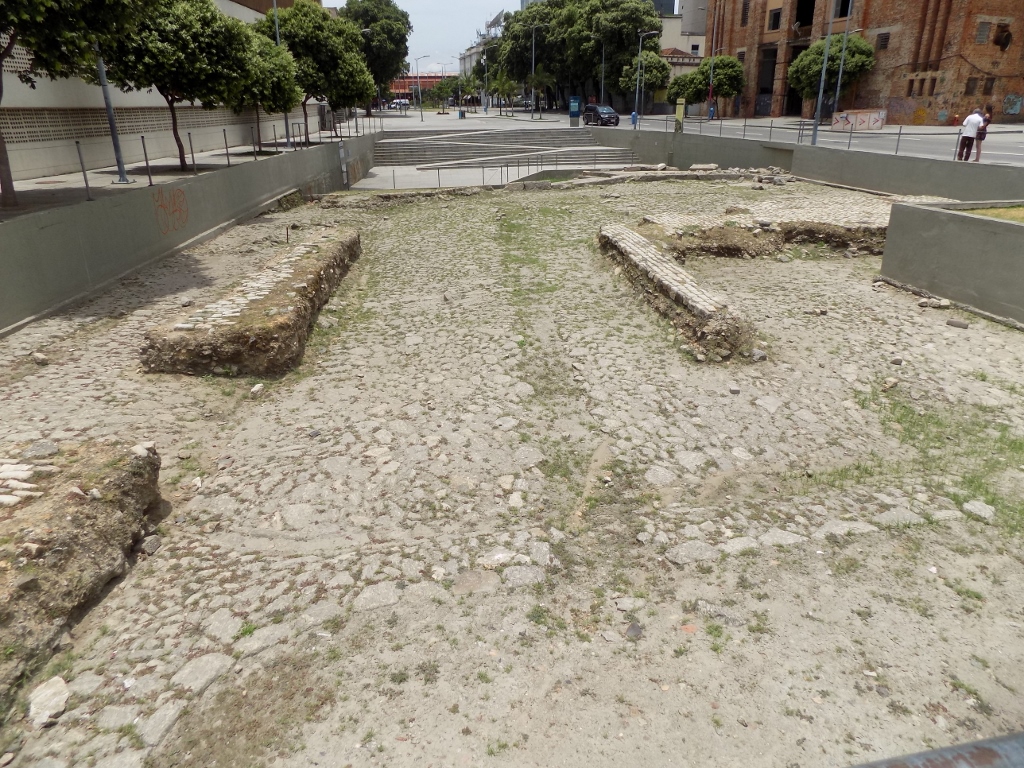 Valongo Wharf Archaeological Site
Valongo Wharf Archaeological Site
It is estimated that around 900,000 Africans were brought into South America via Valongo Wharf. (By the way, it is also estimated that over the period of around 300 years of slave trade, around 4 million Africans were brought to the Brazilian ports alone!) The wharf was made very simply and this may be seen by the elements that are mildly sliding, since they actually followed the natural slope of the beach on which the wharf was built.
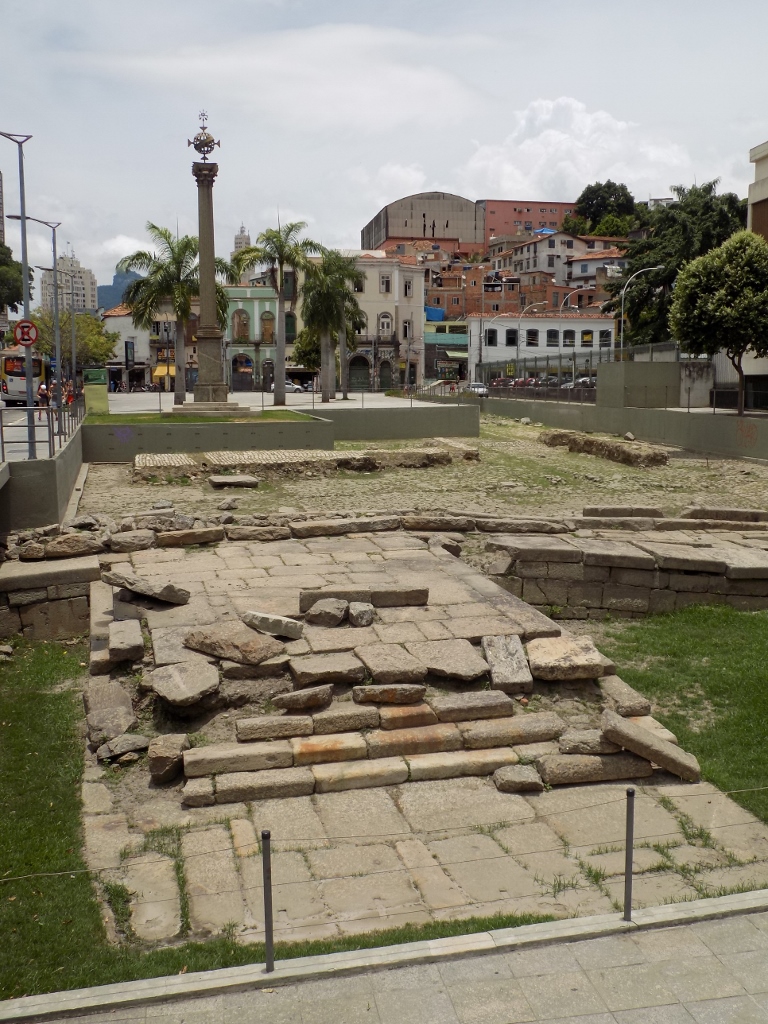 Valongo Wharf Archaeological Site
Valongo Wharf Archaeological Site
As the city developed, in 1911, this part was filled in. A century later, within the scope of a city renovation project, archaeologists brought the remains of the Wharf to the light of the day.
Nowadays, these seemingly uninteresting stone structures constitute not only the most important tangible evidence on the arrival of African slaves to the American continent, but perhaps even more significantly the spiritual aspect linked to all the horror which bringing of slaves from Africa actually meant. Slavery in Brazil was finally and officially abolished in 1888, while Sneza and I concluded that I must have been a slave in some previous life, maybe even here in Brazil, since this whole story upsets me really deeply. I’m additionally dismayed and nauseated by the infinite human hypocrisy that would easily justify bringing of other humans to the state of a non-being, while duly and regularly going to church, praying to God and BELIEVING (!) in one’s own salvation.
There I took a photo that included the statue of Christ the Redeemer watching over the city and when looking at it I cannot help but think of a song by a Serbian musician and songwriter, Bora Djordjevic, “Look homeward, angel” (by the way, the title was indirectly taken from a verse by John Milton).
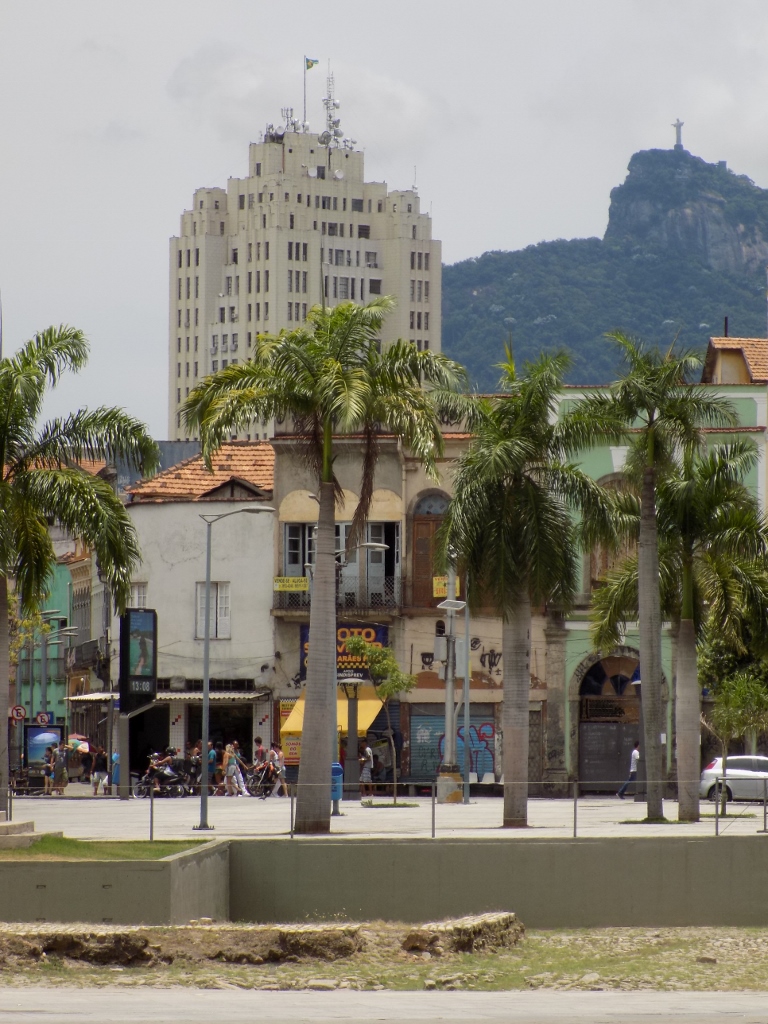 Christ the Redeemer and a part of the Valongo Wharf Archaeological Site
Christ the Redeemer and a part of the Valongo Wharf Archaeological Site
“Look homeward, angel,
and take the web off your eyes,
you’ll see distressing scenes,
you’ll see the miserable and the ill,
you’ll see the bitterness, death and gloom.
Look at your flock, angel,
they are all cripples and beggars,
they roam blind in a crowd,
the backbone was broken to them all,
they expect salvation from you. ...”
We stayed here only for a short while, not just because there was not that much to see, but also because of the excessive heat and the Sun that was practically right above our heads. For this reason, trying to stay in the shade as much as possible, we went to Pier Maua which had been reconstructed in the last couple of decades to be able to receive large cruisers, as well as to be used for the organisation of different events.
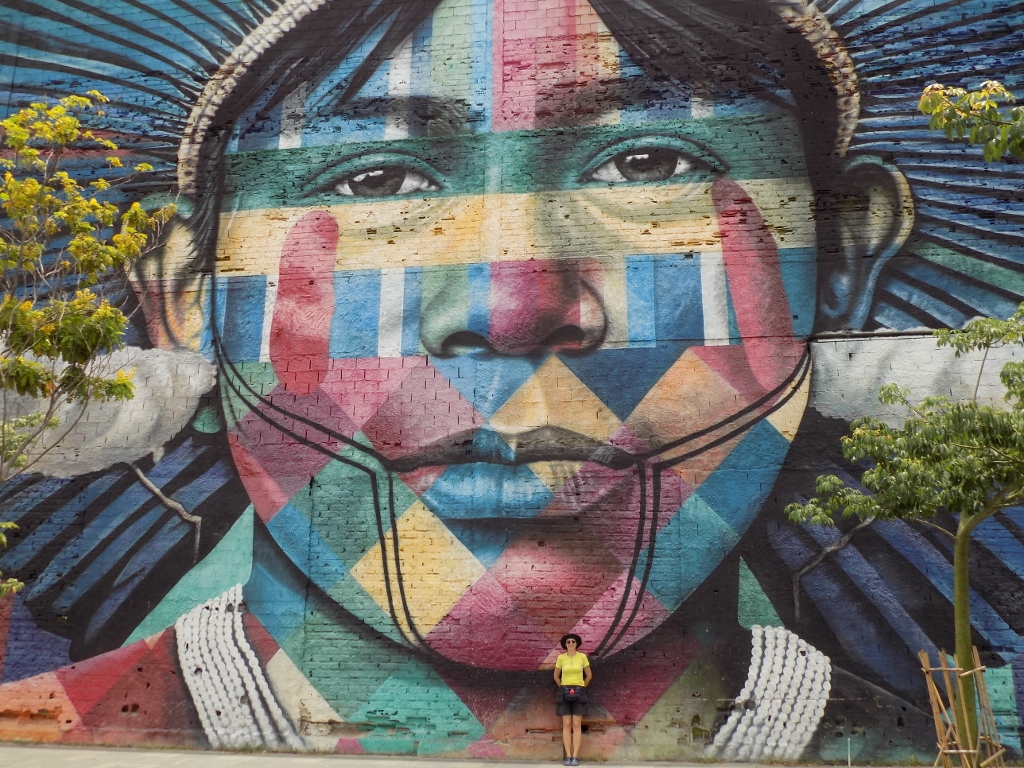 Posing with a mural, a detail from the surroundings of Pier Maua
Posing with a mural, a detail from the surroundings of Pier Maua
This place was interesting for us primarily because we had to catch a tram there. As it was Saturday, everything seemed closed down, but there were still a lot of people around. We realised they were going in the direction of the Rio Aquarium where we also planned to go. However, first we went to the not too far main coach terminal to buy the tickets we needed in order to start with our touring around Brazil we planned to begin in two days.
So, with the tickets bought we returned to AquaRio, a large aquarium venue. The place is somehow earmarked mostly for children, but we were both glad we went there, although it is certainly not the most spectacular place in the city. At least not for us.
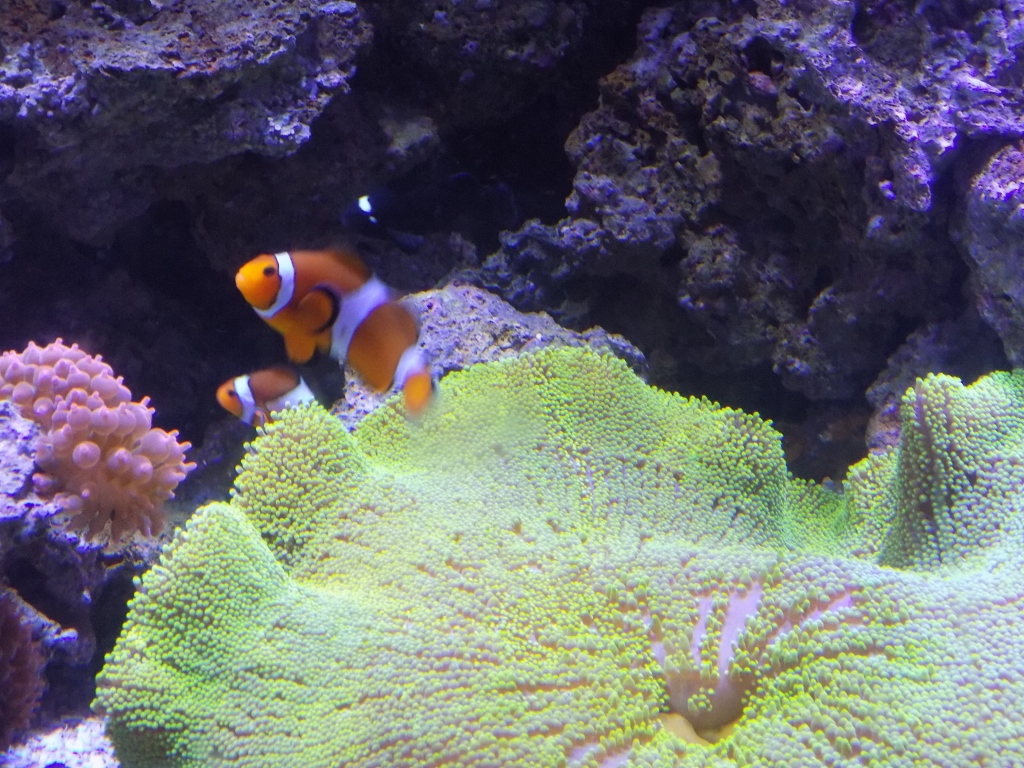 A detail from AquaRio, the naughty fish would not stand still and pose for the photo
A detail from AquaRio, the naughty fish would not stand still and pose for the photo
Afterwards we walked following the tram tracks and thus we reached Maua Square in which it is possible to see a few interesting buildings, including the Museum of Tomorrow (Museu do Amanhã), a science museum.
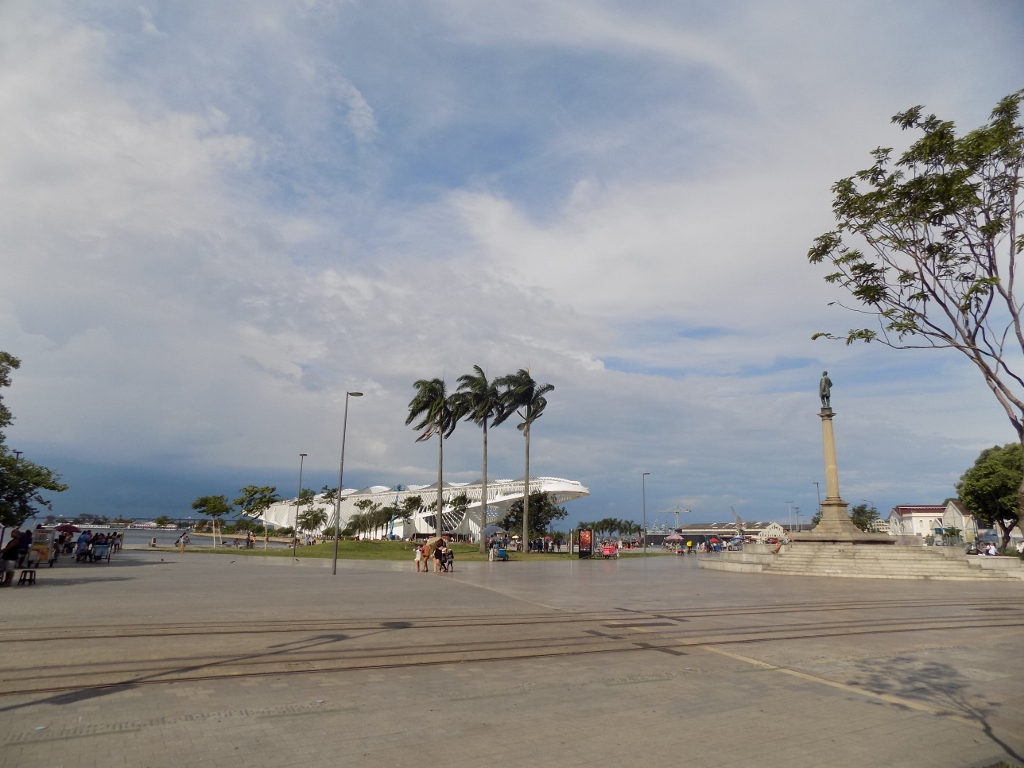 Maua Square and the Museum of Tomorrow
Maua Square and the Museum of Tomorrow
No matter how interesting and attractive the description of this contemporary science museum seemed, we skipped it and headed for the Monastery and Church of Sao Bento. But, since I’m mentioning museums, let me say that the most important Brazilian museum, the National Museum in Rio de Janeiro, had unfortunately burned to the ground a couple of months before our arrival. I think that this is a very good example to see a major contradiction of this country. On the one hand, Brazil is an incredibly rich country (I’m thinking primarily of its natural resources) that is developing economically and according to some infrastructural parameters it can be compared to the first world countries. On the other hand, to allow the most important museum institution in the country with around 90% of its exhibits to be destroyed during a single night, I think this can happen only in a completely undeveloped country. Fires may break out anywhere, but can you imagine any serious museum in the world in which the fire protection system is so inadequate as to allow such a loss? This is a sad thing for the entire world and for Brazil it is both sad and a pity.
But, let me go back to what we did visit. The next site in our plan was the Benedictine Monastery of Sao Bento. It is located on one of the four hills that constituted the centre of Rio de Janeiro in the 17th and the 18th centuries. Its construction started in 1617, with new elements constantly added up until the beginning of the 19th century. Still, regardless of the styles and the tastes that changed over time, this entire ensemble appears harmonious. We entered the church and sat in it for a while, enjoying the pleasant atmosphere that permeates the interior.
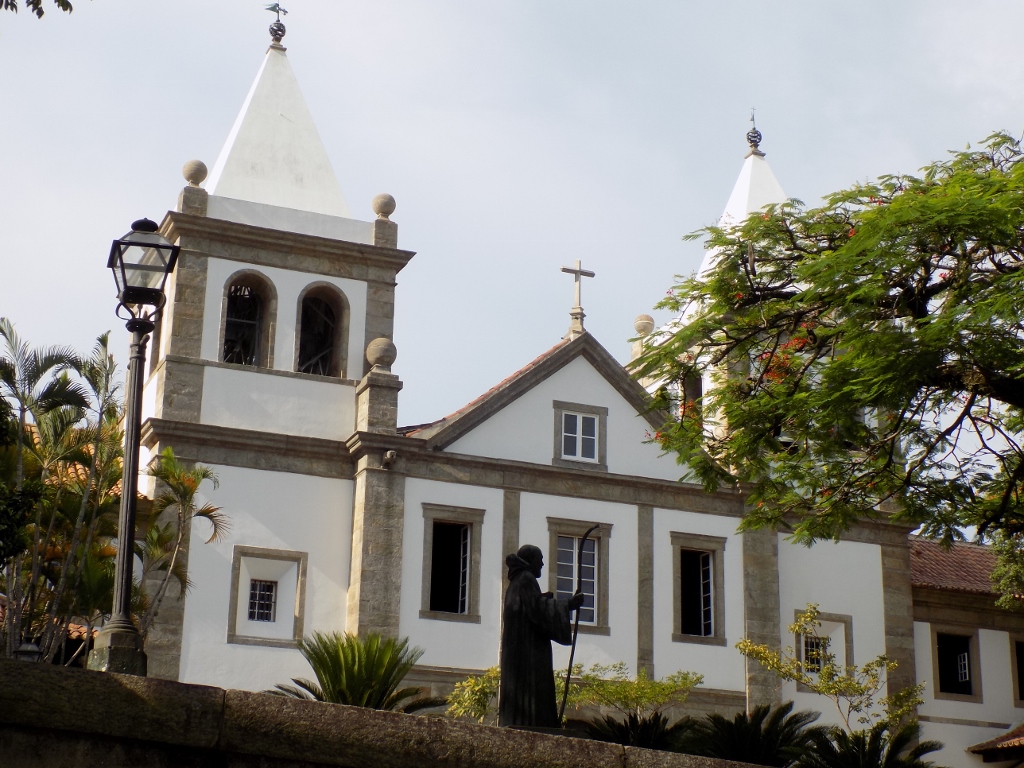 Monastery of Sao Bento
Monastery of Sao Bento
This was not the end of our sightseeing on this day. As we had already planned, we went back to Carioca Square and from there to the first stop of the old city tram known as “bonde.” However, it turned out we were late, since the last tram for the day had already finished with its ride. Still, we were not too sorry, because in the near proximity there is the Metropolitan Cathedral that was also closed, so we simply decided to come back tomorrow.
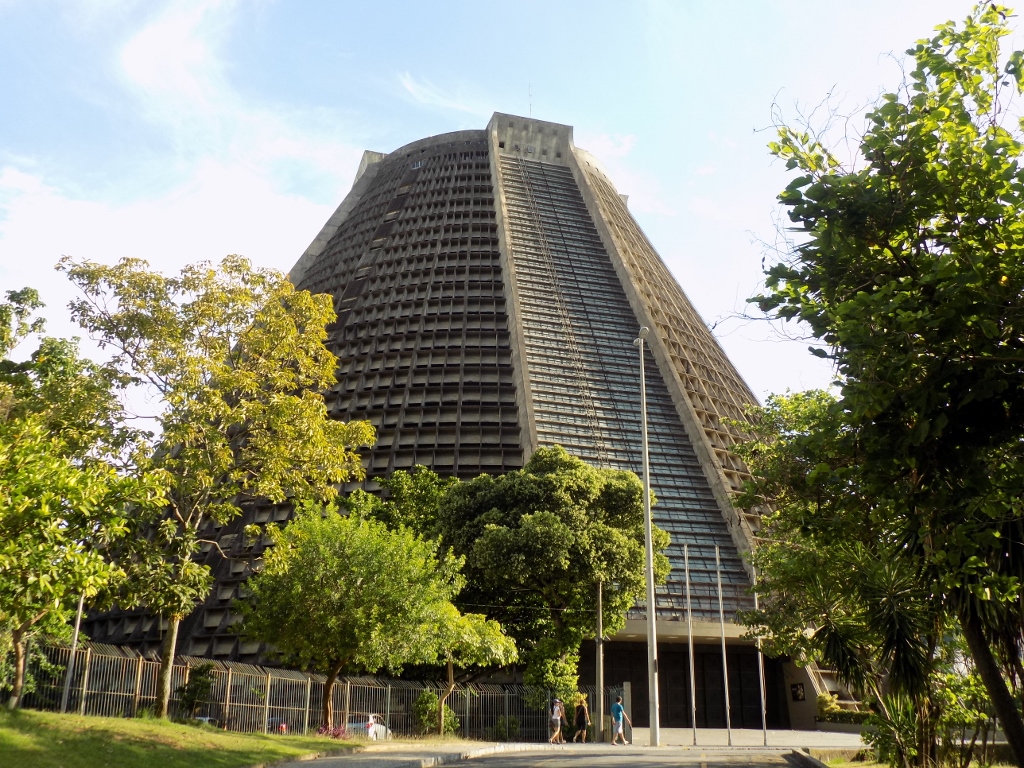 Metropolitan Cathedral
Metropolitan Cathedral
Maybe all of this was not too bad, since by this time we were rather tired and it felt nice to go back to the hotel area, have a light dinner there and then retire to the room completely worn out.
Although we did plan to go out at least one time and listen to some music while in Rio, every evening we were so exhausted that by the time we had finally reached the room, there was no way we would go out again. Our conclusion was that this tiredness was the consequence both of the extensive walking during the day and of the significant climate change and arrival into a hot and humid country. Perhaps, it should be good to come back again here, not walk too much, take afternoon naps and then later really enjoy the wonderful sounds of the Brazilian music.
Our final day during this stay in Rio was supposed to be completely lazy. It was and it wasn’t. To start with, we went back to the centre in order to go first to the Metropolitan Cathedral. The building was constructed in 1979, it has the height of 75 m, can receive 20,000 visitors and has a completely unusual shape for a church. From the outside, it has the shape of a frustum, but we also wanted to see it from the inside. And we were not disappointed. This is the space that also appears unusual for a church, but it is certainly not unworthy of worshiping a god.
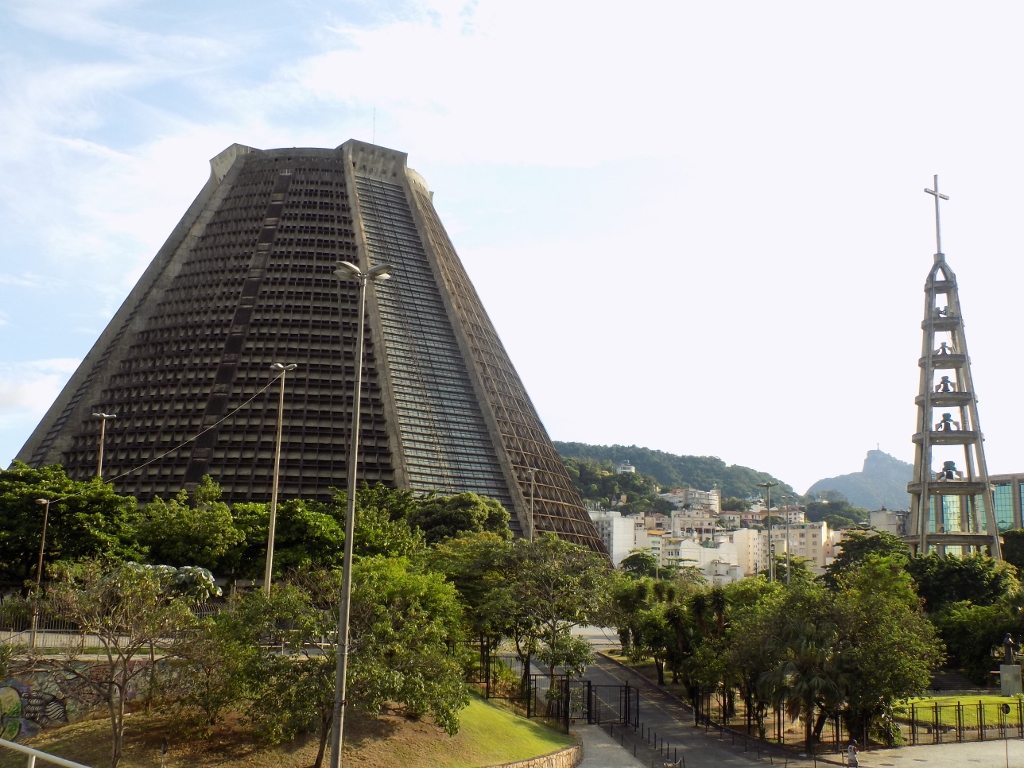 Metropolitan Cathedral and its tower
Metropolitan Cathedral and its tower
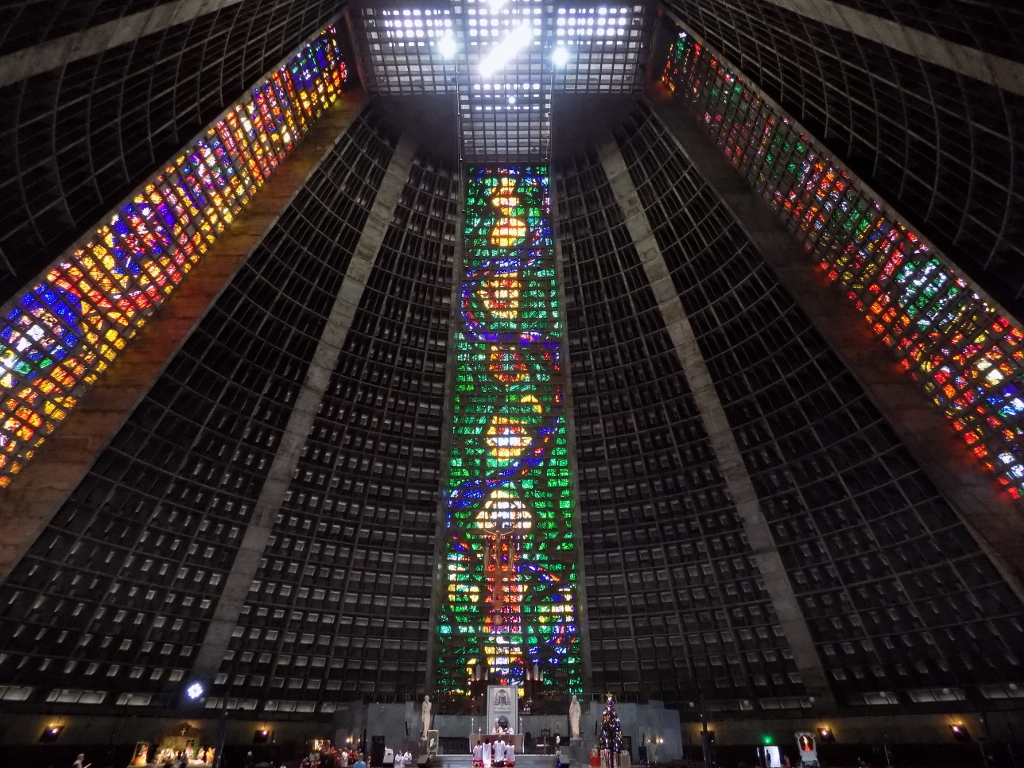 Metropolitan Cathedral
Metropolitan Cathedral
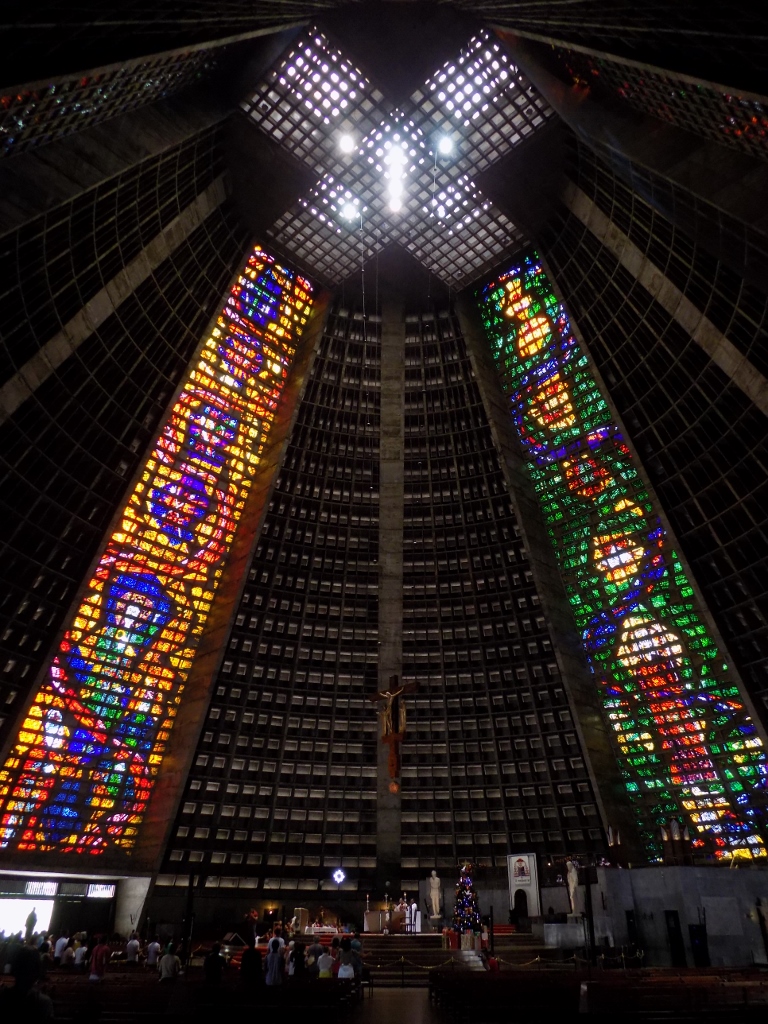 Metropolitan Cathedral
Metropolitan Cathedral
Following this visit we went to do what we could not on the previous day and that was a ride on the old tram called bonde. In the past, such trams ran throughout Rio, but today there is only this one line left that connects the centre of the city with Santa Teresa quarter. By the way, the centre of the city is flat, since it spreads in front of Guanabara Bay, while Santa Teresa is up on a hill that is near the centre. To start with, the bonde took us over the Lapa Arches (Arcos da Lapa). Lapa is the name of yet another quarter and originally these arches were a part of an 18th-century aqueduct that transported water to the centre of the city. Nowadays, there are rails laid down over it and it forms a part of the route of the bonde tram.
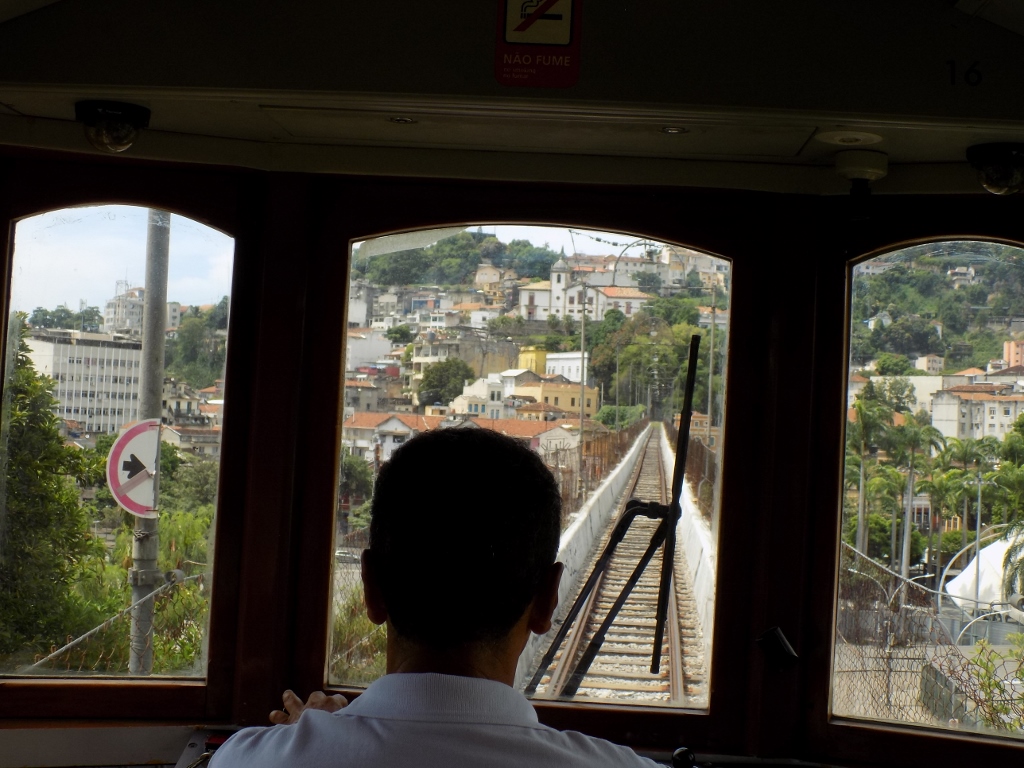 The bonde tram riding over the top of the former aqueduct
The bonde tram riding over the top of the former aqueduct
We were not quite sure what the ride was going to be like and how long it would take, since we had different information, but when we got to the final stop, we realised that the bench back rests were just flipped over to the other side, the driver moved to the part that was the back on the way up and now he drove the tram along the same route, just in the opposite direction.
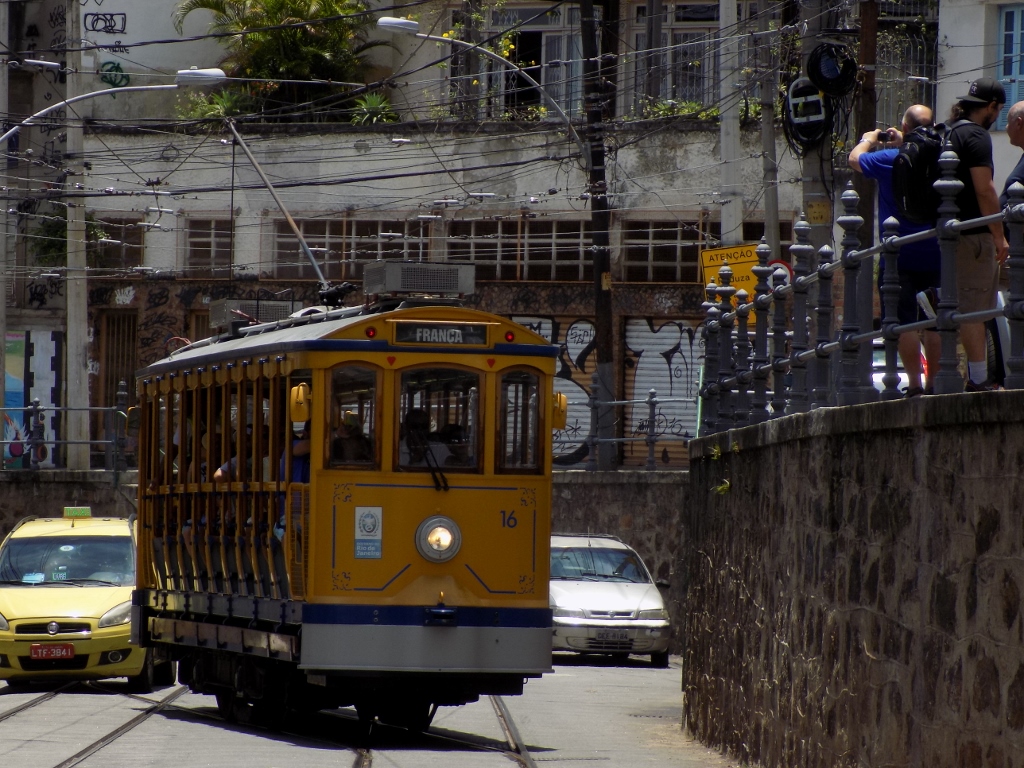 The bonde tram shares its space with cars
The bonde tram shares its space with cars
As we headed back towards the centre, we got off on a stop and walked a little around this part of Santa Teresa, taking a seat at a bar in order to have coffee. The Sun was right above our heads (just look at the tram’s shadow in the upper photo) and it felt very hot. Still, afterwards we decided to walk down to Lapa and the centre.
This leisurely descent and passing through some parts of Santa Teresa and farther towards Lapa were very interesting and picturesque. Every now and then we would see Sugarloaf in the distance, but the local sights seemed more attractive.
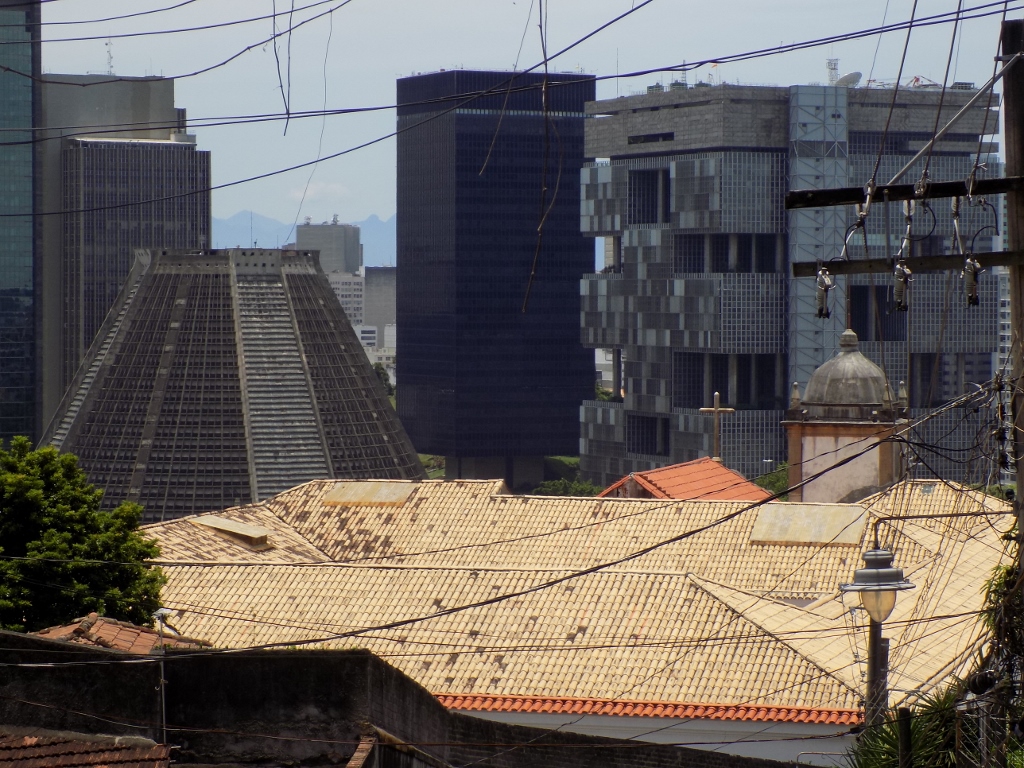 The new and the old: new buildings in the centre and the Metropolitan Cathedral, as opposed to the roofs of the 18th-century Monastery of Santa Teresa
The new and the old: new buildings in the centre and the Metropolitan Cathedral, as opposed to the roofs of the 18th-century Monastery of Santa Teresa
And then we reached the Steps. Not just any steps, but the Selarón Steps (Escadaria Selarón). We came to them from above and this is what they look like.
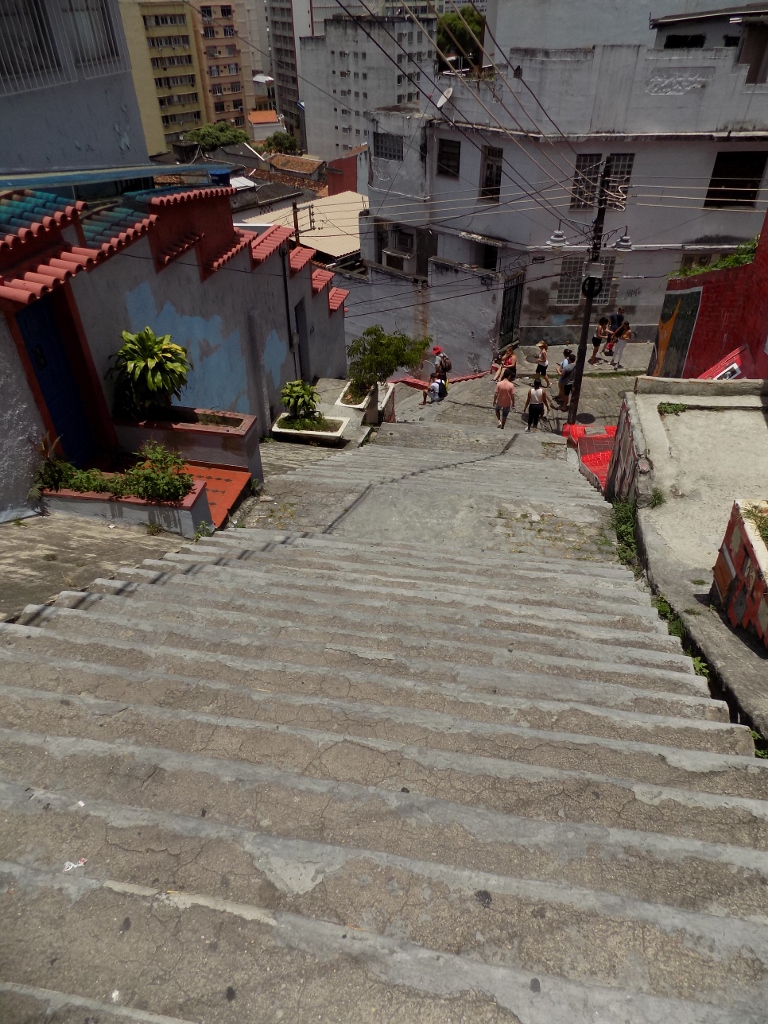 Selarón Steps
Selarón Steps
Nothing special, you will agree. And yet, this is a piece of art the author of which is a painter of the Chilean origin – Jorge Selarón. The whole thing becomes clearer when you go down a bit or when you look up from the bottom of the steps.
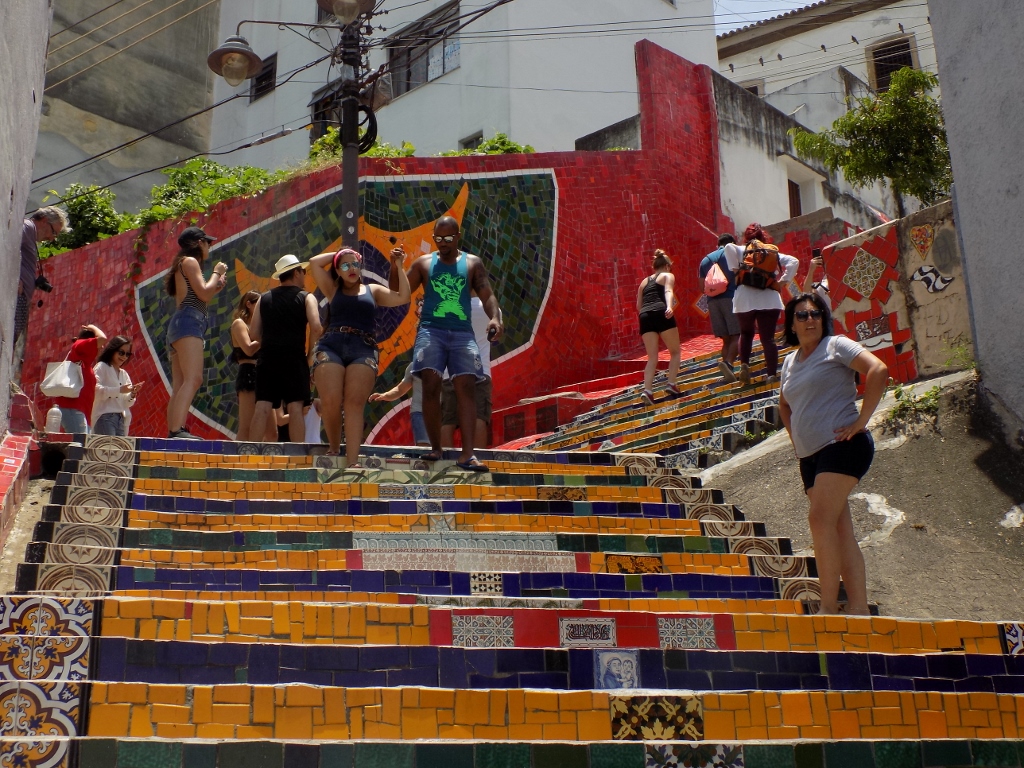 Selarón Steps
Selarón Steps
The author started to decorate the steps as a hobby and in the meantime they have become famous throughout the world appearing in numerous international magazines, documentaries, ads, etc.
After we had taken a few photos at the top section of the steps, we decided not to continue going down the steps, in order not to have to climb them again, since we wanted to see something else. Still, this other route was no less picturesque.
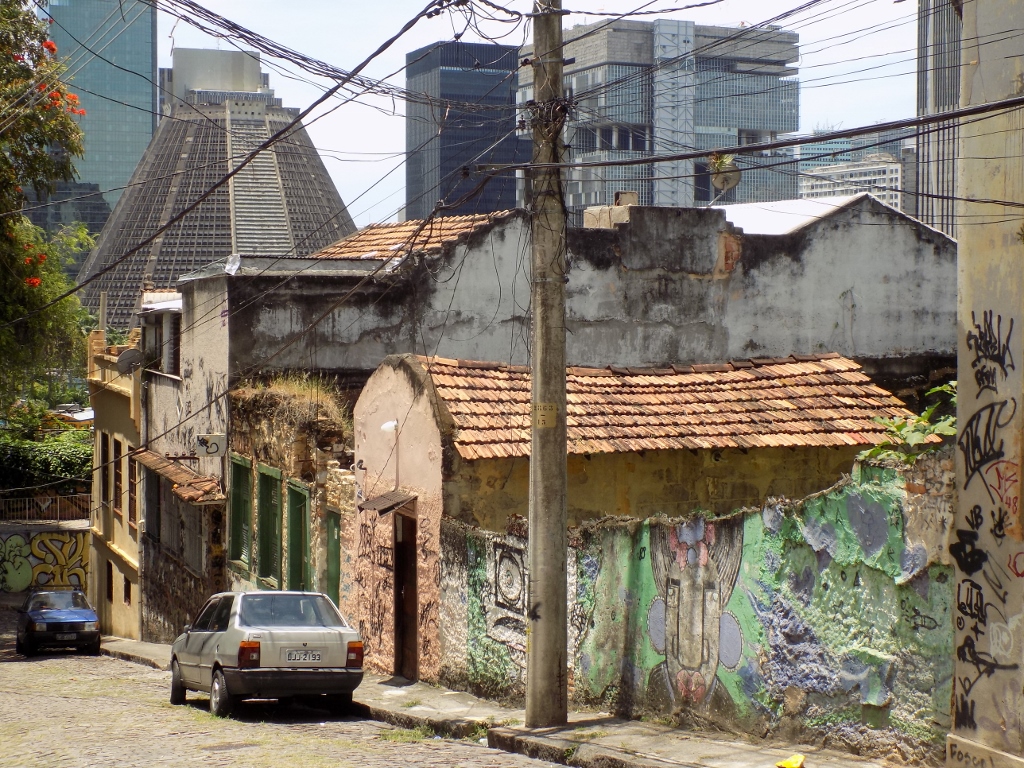 Sights from Lapa quarter
Sights from Lapa quarter
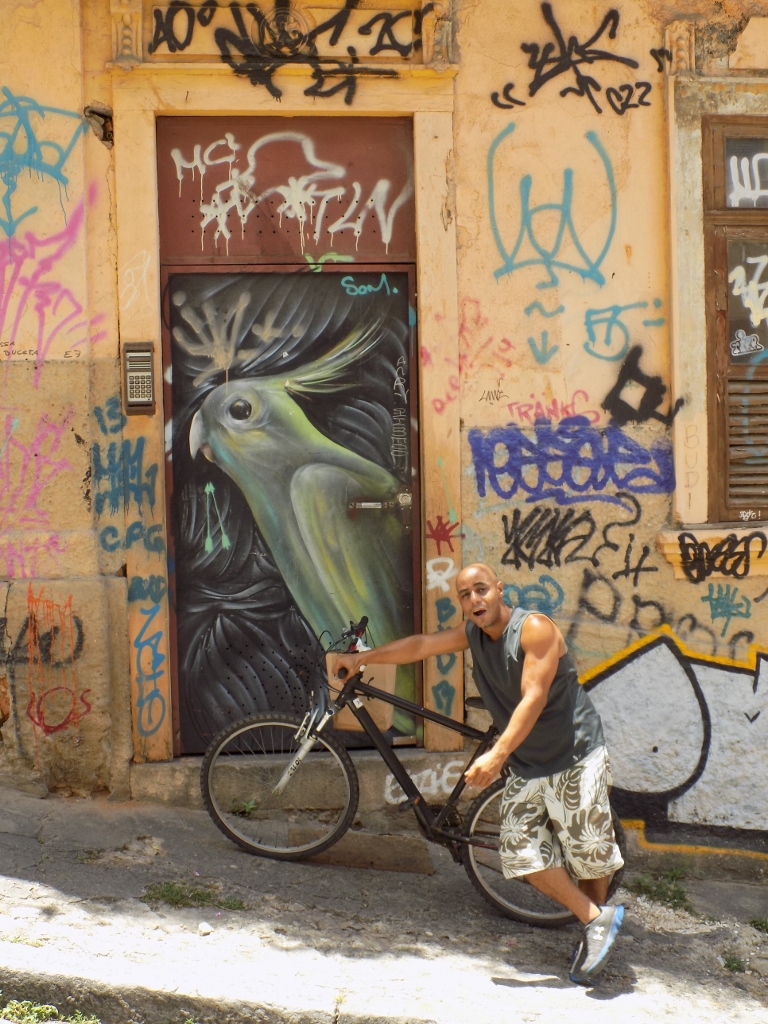 It’s not easy going down when it’s hot, but it is even more difficult to push a bicycle up
It’s not easy going down when it’s hot, but it is even more difficult to push a bicycle up
And then we reached the Lapa Arches (Arcos da Lapa), but this time we were at the level of their base. So, let me say it again, this is an aqueduct from the 18th century that is now used for the passage of the bonde tram as it goes to and from Santa Teresa.
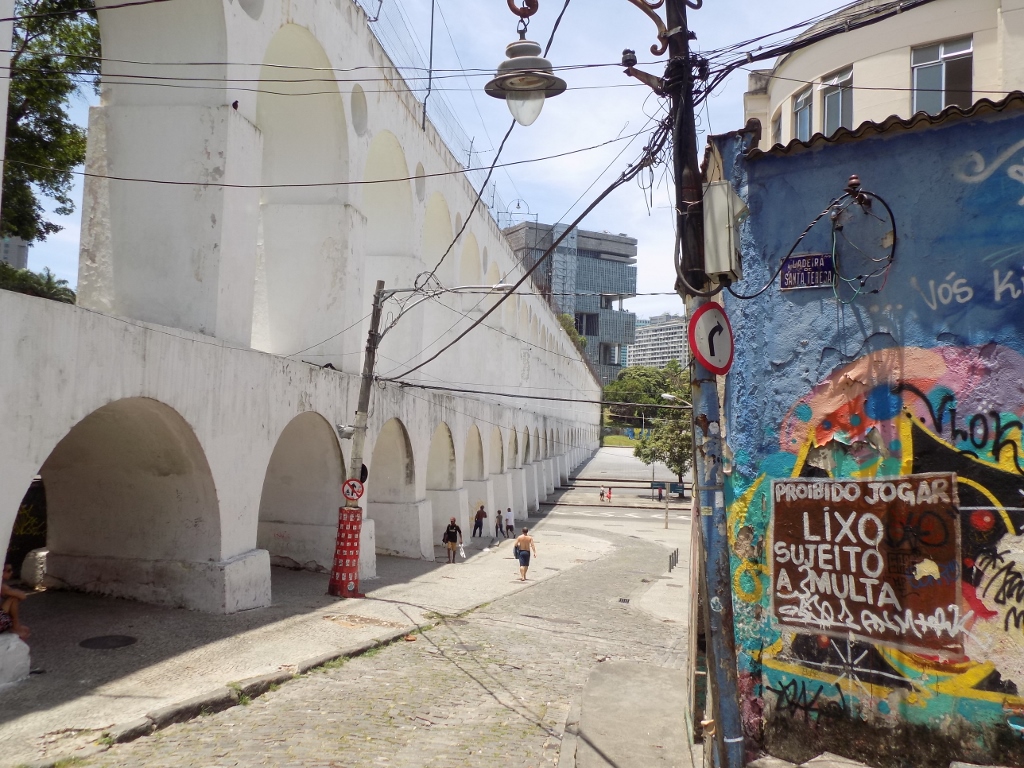 Lapa Arches
Lapa Arches
Close to the arches we could once again have a look at the Metropolitan Cathedral that appeared as if it were a space ship.
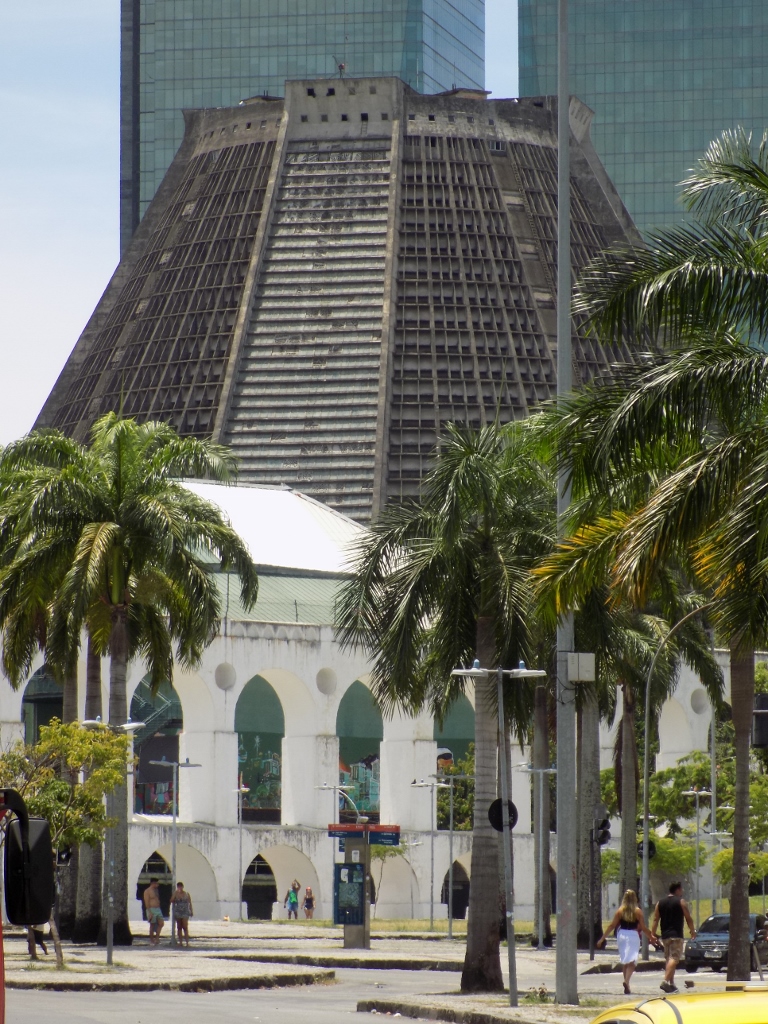 Lapa Arches with the Metropolitan Cathedral in the background
Lapa Arches with the Metropolitan Cathedral in the background